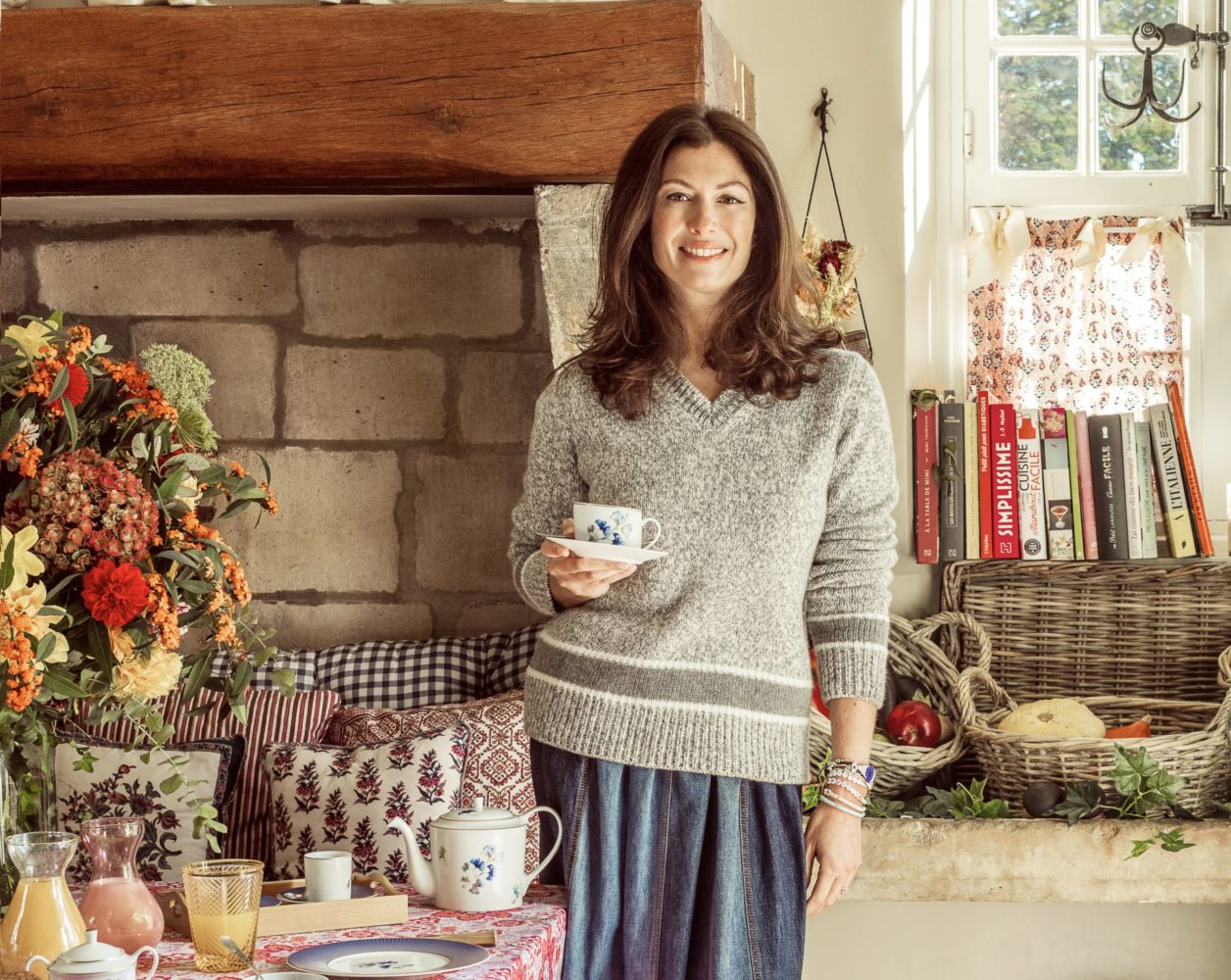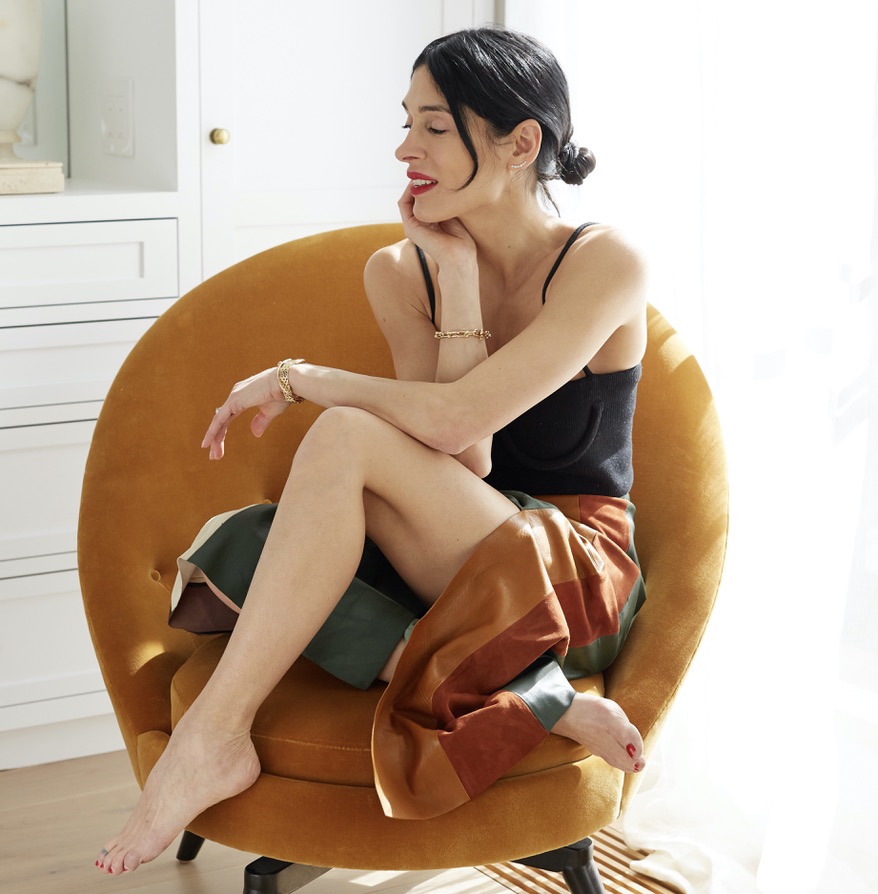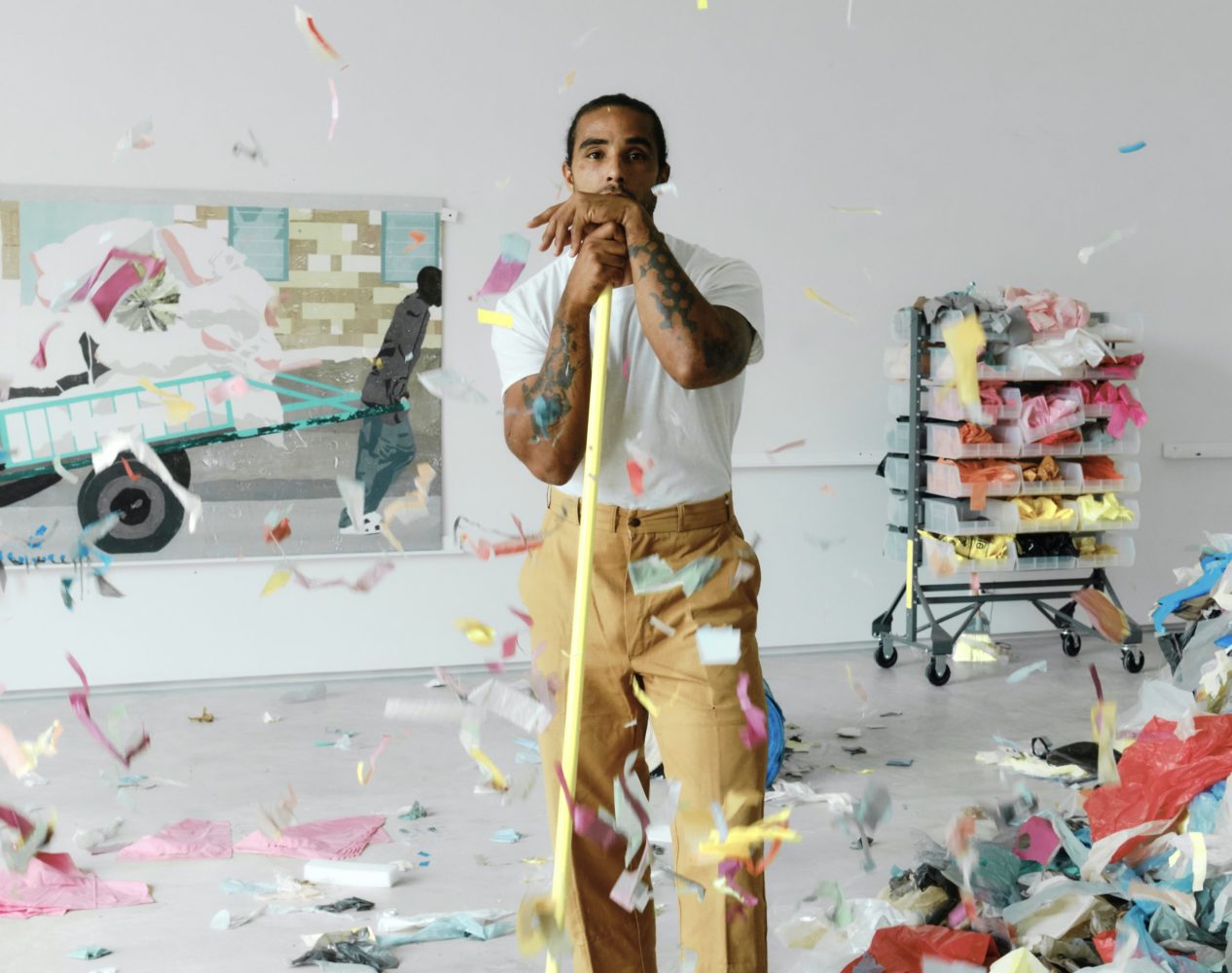When a space opened up at the end of rue Las Cases in Paris, where India Mahdavi has her studio, showroom, and boutique, the designer jumped at the chance to create something all her own. With near floor-to-ceiling windows overlooking the rue de Bellechasse—allowing for pedestrians to peer in even amid the city’s series of lockdowns—she has transformed what she calls the Project Room into a transportive interior space where her creative output, along with the objects and art of others, have a unique opportunity to meet in dialogue.
Stepping into a space designed by Mahdavi is a total experience. She deftly deploys color, pattern, and texture to produce a feeling of comfort that’s never a result of the mundane or boring. While stimulating the senses, her understanding of proportion and light makes for an atmosphere of ease and enjoyment. And her love and understanding of film imbues each project with that special unforgettable quality—like at Chez Nina in Milan, Sketch in London, and Ladurée in Beverly Hills, Tokyo, and Geneva.
Mahdavi spoke with Whitewall from Paris, where she discussed her affinity for forgotten materials and the importance of enjoying the present.
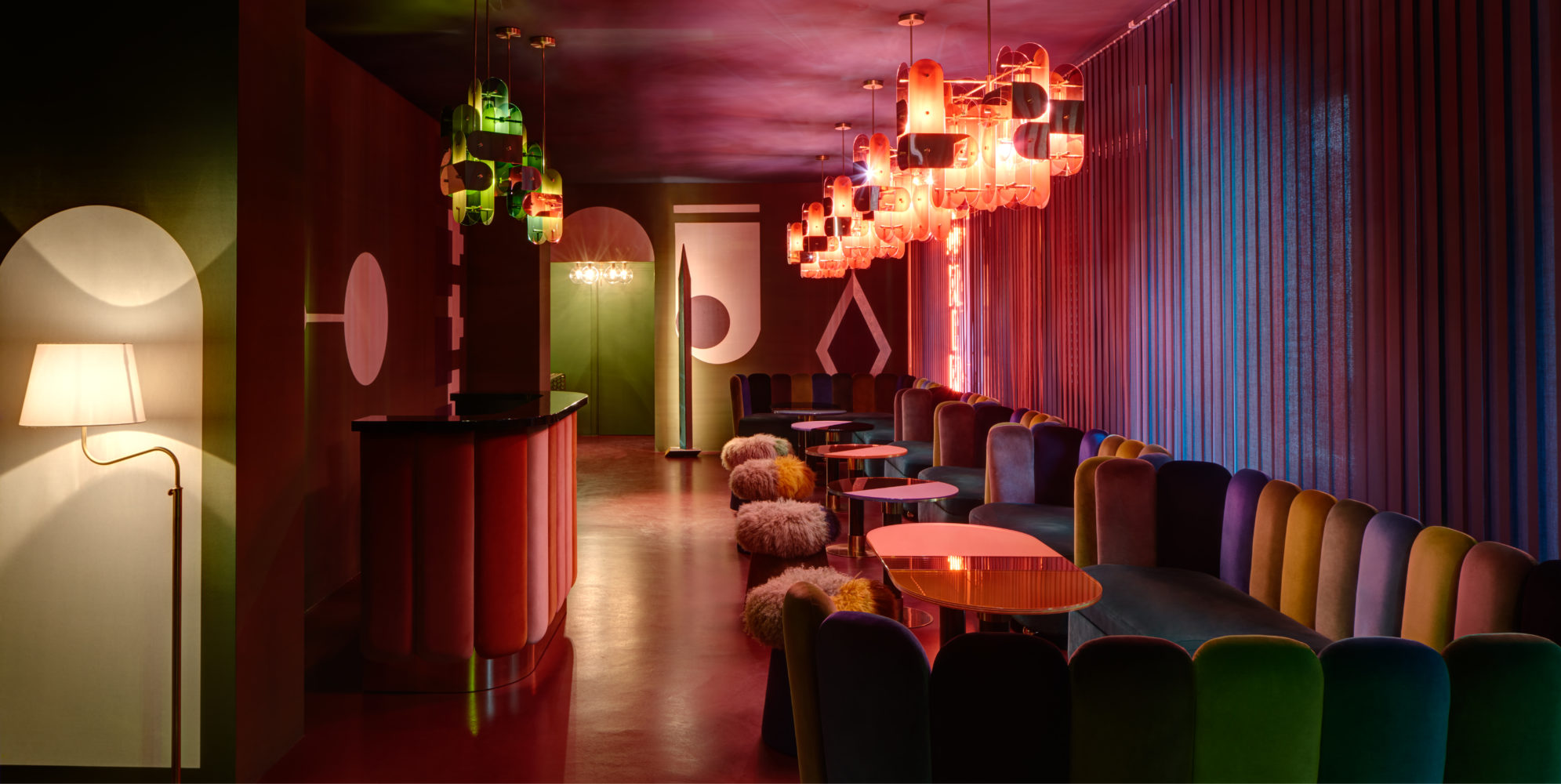
Chez Nina designed by India Mahdavi in Milan, photo by Mattia Iotti.
WHITEWALL: Last year you launched the Project Room on rue de Bellechasse. What is your vision for this space?
INDIA MAHDAVI: For the past 20 years my studio has been designing residential, commercial, and scenography projects, always responding to a location, to a client, to a function. In that context you always have constraints. Project Room is a space of free expression and collaboration—a place in which the sole boundaries are the four walls and window overlooking the street. I use it to showcase and test my newest ideas but also to invite, produce, and exhibit designers from across the spectrum. Project Room merges talents and instigates conversations under the form of installations, décors, models, screenings, performances, lectures, and meetings. The intention is to regenerate the space four times a year.
WW: What was the inspiration behind the latest installation, Project room #3?
IM: We’ve come to spend so much time at home during the lockdown that the living room has become an essential and versatile domestic space. It’s where we work, relax, and exchange. We’re spending a lot more time indoors than we ever have. “Au Salon” is an extraction of a private living room placed on the street, in the light of the public eye. It is purposefully exaggerated, like a caricature for a living space. I like working with different layers. The wallpaper in itself has several, the soft furnishing adds another, and the art adds another dimension. These combined layers give a sense of saturation. It has been interesting to see how people have stopped and felt fascinated by the space—it carries a sort of magnetic aura.
WW: In that installation is a newer piece, the Bruno Library Tower. What was the idea for this functional, freestanding, and sculptural piece?
IM: It’s a piece we designed during lockdown. Suddenly, it was about bringing the office inside the home instead of the usual home to office scenario. Working from home requires storage for your books, files, papers, things that you may want to show and others that you might want to hide—hence why it revolves. This bookshelf was named after French philosopher Bruno Latour; la tour means “tower.” I always wanted to create a vertical free-standing bookshelf as a tower because usually living spaces are very horizontal. Sofas and coffee tables are low horizontal elements—verticality is missing. With Bruno, you have the opportunity to add vertical tension.
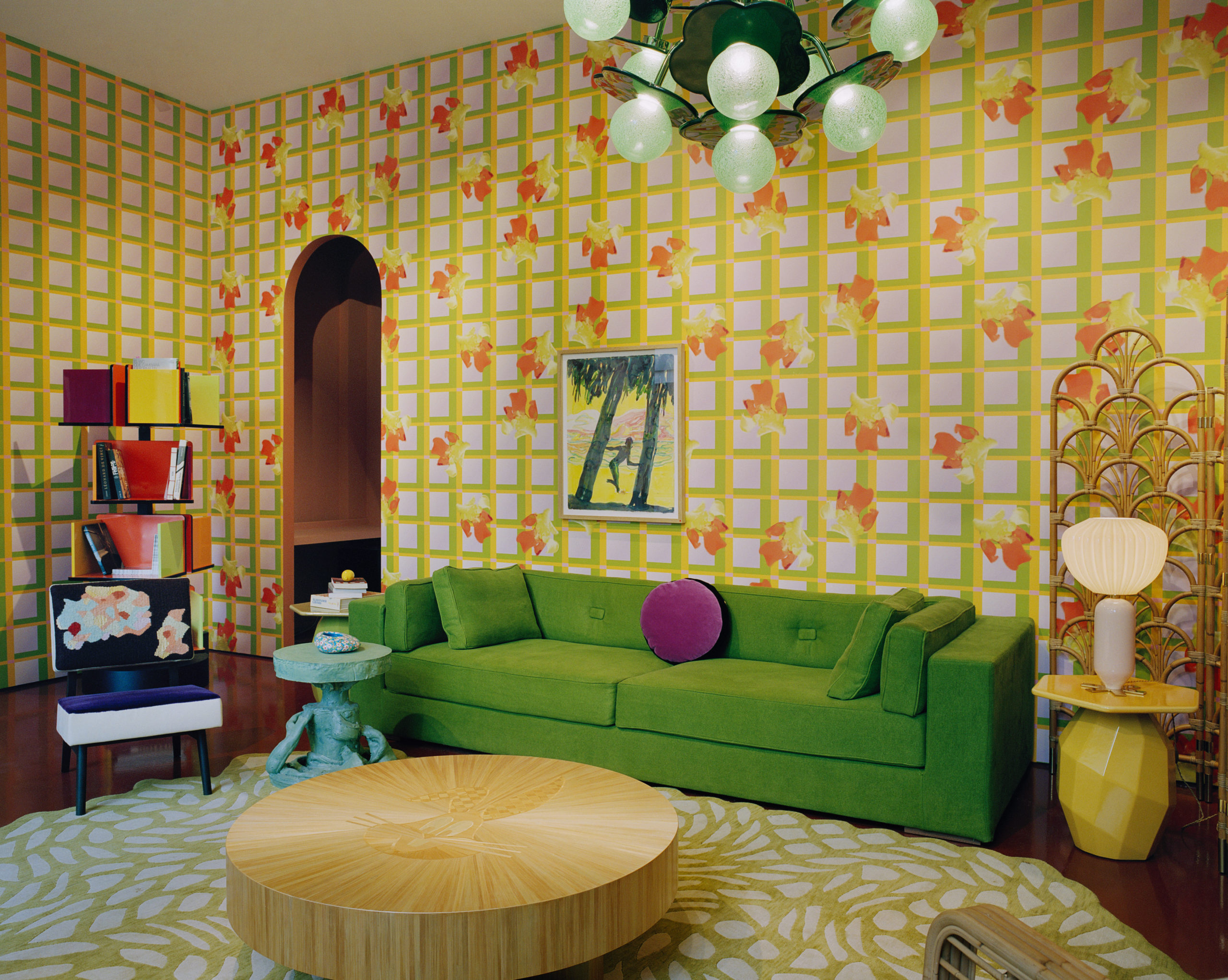
Installation view of Project Room 3 in Paris, photo © François Halard.
WW: Before studying architecture and design, you had imagined you’d go into film. What connection do you see between design and film?
IM: I think there’s a relationship between and film and interior design, more than design. Interior design and film are very similar, as you start with a scenario, then you start building around where the story leads you. Both industries have common grounds. I can easily compare myself to a filmmaker, the client to a producer, and the inhabitants to actors. All my favorite filmmakers have been drawn to strong interior aesthetics. I’m thinking of Fellini, Visconti, Almodóvar, Lynch, Kubrick, and Tati, just to mention a few.
WW: You’ve said, “More than collaborations, I value human encounters.” How do you like to facilitate those human encounters via your work?
IM: What I’m interested in when I take on a new project is who am I going to work with. A project is really helping someone answer the question they need to ask. You start a conversation, and that’s what I value most. The end project is the result of this conversation.
WW: The way we value human encounters and interior spaces has vastly changed over the past year. How do you think we’ll see that impacting design for private and social spaces going forward?
IM: Yes, of course. I always think about comfort. I think that if you’re comfortable in a space, if you’re happy, you can let yourself go. It’s a way of encouraging conversations and human encounters—and the sense of comfort can be physical as well as visual.
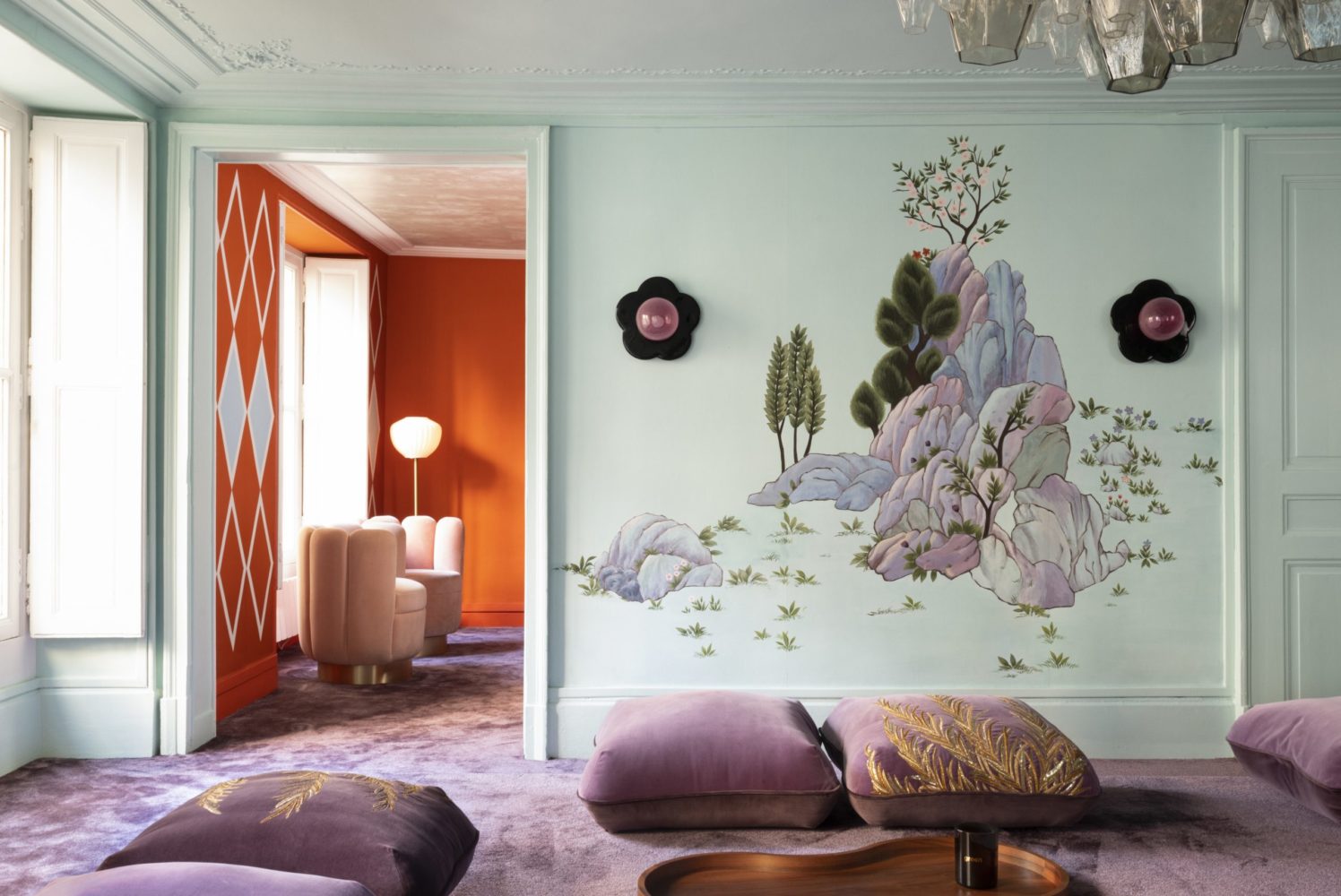
India Mahdavi’s 2020 wallpaper “Abbasi in the sky” collaboration with de Gournay, photo © Rebecca Reid.
WW: You’ve said, “I’m not scared of going into these forgotten materials and using them in a very different way.” What forgotten materials are you drawn to at the moment?
IM: I was one of the first to reuse rattan back in 2007/08. It was thoroughly used throughout the seventies and then became a very cheap material that nobody cared for. For me, rattan conveys the idea of a southern warmth, expressive and charming. I’m currently also working with Formica, which is considered as a cheap material and offers a wide range of colors. I am now also interested by the softness and fragility of plaster.
WW: We feel like glass is having a moment, too, and you recently debuted a glassware collection for Waww La Table. Can you tell us about this collection and what you enjoy about working with glass?
IM: Exactly, that is true. This is a project I did with Waww La Table, a startup company launched by my friend Péri Cochin during the pandemic. By designing and producing glassware, we sought to help Les Ateliers de Tyr in Lebanon during this very difficult time of their history.
WW: For your recent Monoprix collection, you worked with Creative Handicrafts, a social enterprise that provides women in Mumbai training for fair-trade manufacturing jobs. Why was that important for you?
IM: I’m lucky enough to work with the luxury industry, on the one hand. On the other, I think it’s important to democratize your work and to be inclusive. For my second collection with Monoprix, I was asked to design a clothing line for the very first time. It was exciting and challenging. I accepted because Monoprix has been producing these types of collaborations with Creative Handicrafts, who support women that have suffered domestic abuse and financial difficulties.
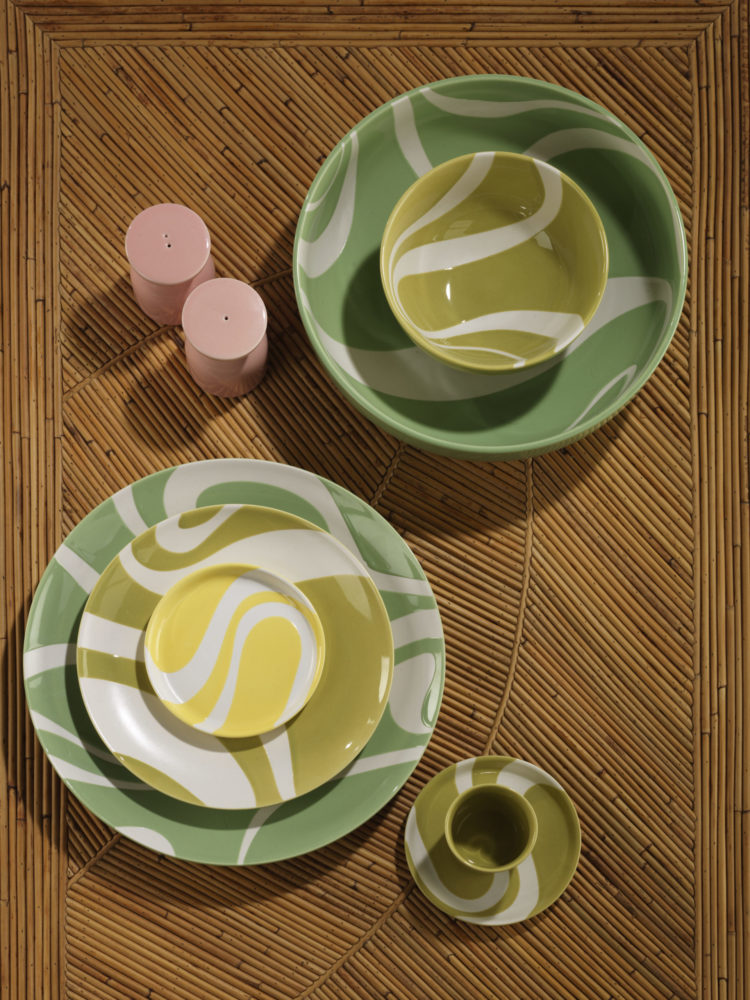
India Mahdavi’s collection with Monoprix, photo © Thierry Depagne.
WW: You designed a project in Siwa with Dr. Mounir Neamatalla, a pioneer in eco-tourism. How did you approach sourcing local materials and creating objects in salt that inspired a small local industry?
IM: This project goes back nearly 20 years. I started working with Dr. Mounir Neamatalla in 1999. He started building Adrere Amellal, the very first ecolodge in the Middle East, using the principles of vernacular architecture and materials such as karshif, a mix of salt blocks and mud, palm tree wood and rope, sandstone and angel coins, among others. The building methods became increasingly sophisticated and fine-tuned throughout the 20 years Mounir and I collaborated. I worked with the salt that is harvested from the lakes. The Siwa salt has a very white and transparent quality, similarly to alabaster. I started designing a line of objects in salt: votive candles, tiles, salt bath cubes, and furniture. This eventually became a local industry for the Siwi people. Building in Siwa was my only architectural experience and remains to this day the richest I’ve had. It isn’t about implementing your drawings, but, rather, sculpting the space with the builders.
WW: You are known for creating places of joy, filled with color and vibrancy. I can only sense a greater need for that kind of environment in a post-pandemic world. What role do you see joy playing in the future of design?
IM: Yes, of course, because we want to become lighter. We’ve all suffered from this heavy situation, and I think that living in the present moment has become essential. Enjoying the present is making every moment special—every hour, every minute of your life count. You come back to the basics, and the basics are joy, and joy is color and light. We should embrace those.
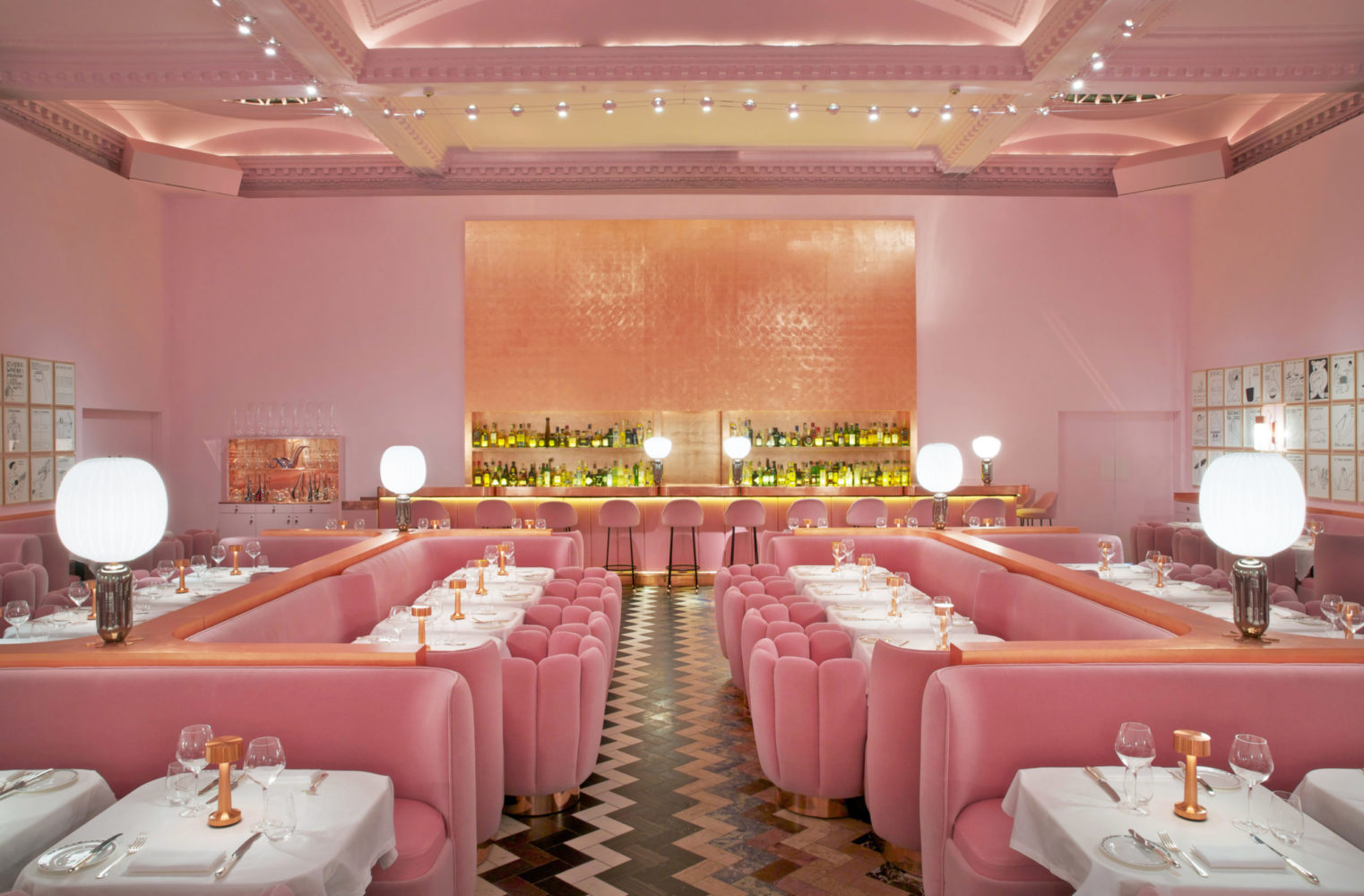
The Gallery at sketch in London designed by India Mahdavi, photo by Rob Whitrow.





